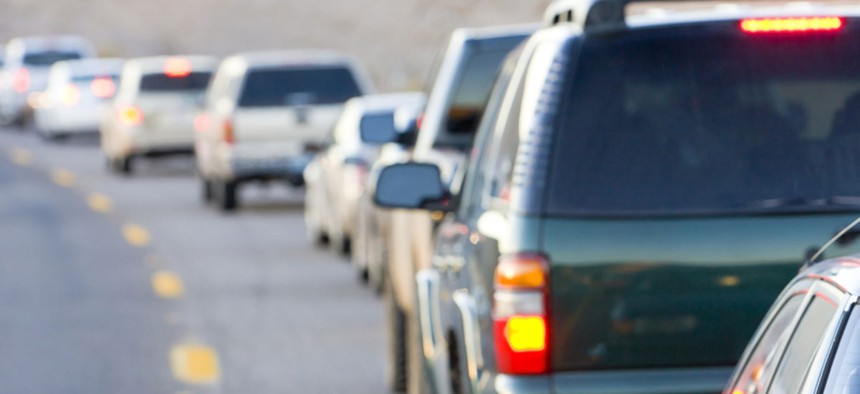Study: Drivers Have More Stressful Commutes Than Transit Riders or Walkers Do
Transit riders and walkers, who avoid the “unexpected delays” of traffic, stack up better in a new survey.
There’s nothing quite like the unpredictability of traffic when it comes to commuter stress.
So says a research trio that’s analyzed commuter survey results of people who walked, rode transit, or drove to work or school in Montreal. The survey measured the various objective (e.g. travel time budgets) and subjective (e.g. trip pleasantness) stressors felt by some 3,800 students, faculty, and staff of McGill University during their commute on a typical winter day. Drivers had the highest average stress, largely owing to “unexpected delays”:
This additional time budget indicates that they have, perhaps paradoxically, less control over their commute than commuters on other modes. Frequent and unpredictable occurrences require of them a peremptory stance toward their commute, where extra time becomes the best way to assure arriving to work or school on time.
Drivers in the study budgeted an extra 21 minutes in travel time, on average, to deal with traffic congestion. They agreed more strongly than walkers or transit riders with the statement that “the only good thing about traveling is arriving at my destination”—suggesting they derive less enjoyment from the trip itself(perhaps they’d prefer to teleport?). Drivers also expressed stronger desires to commute more by walking or transit than either of those modes did about driving.
Only a handful of previous studies have evaluated the relative stress of various commute modes. Some have found driving and riding transit to be equally stressful—and indeed, transit wasn’t far behind driving in the current study. Other results from the current study fell in line with related research: longer commutes were more stressful commutes, and active commuters (in this case, just pedestrians, as there weren’t enough cyclists to include) tended to be moresatisfied with their trip.
The new work also tried to identify certain stressors specific to each mode. For drivers, predictability was the big problem. Transit riders (subway, train, and bus alike) had their own predictability issues; transfers were associated with more stress, as were wait times—a stressor that speaks to the psychological power of real-time arrival screens. Pedestrians were the “least stressed mode group,” with feeling safe from car traffic their biggest concern.
The researchers conclude:
Active transportation modes are not only environmentally and socially more sustainable, they are also a less stressful way to travel. On[e] way to increase pedestrian mode-share is to protect walkers from traffic and provide more pleasant and more comfortable streets to walk on. Furthermore, public transportation is also less stressful than driving, which is found to involve (somewhat perversely) less control for commuters. Increasing the predictability and range of transit options in an era of increasing driving unpredictability could lead to a greater transit mode share.
That last line is key. Driving might be the most stressful commute mode, but it often remains the most common one out of necessity. When there’s a reliable alternative, however, commuters respond accordingly—in the current study sample, 54 percent rode transit and 29 percent walked, with only 17 percent driving to work.
(Image via PHB.cz (Richard Semik)/Shutterstock.com)



